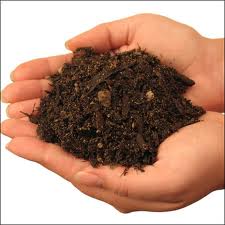
I often mention about keeping the soil for tomatoes well aerated and using foliar feeds (combined with root feeds) to prevent overloading the soil with minerals.
However, there is a little more that needs to happen in order to create the perfect soil that is just right for roots to absorb all the food tomato plant’s need.
The following is taken from an article by Noucetta Kehdi about soil and its ability to feed and support our plants.
“Soil is composed of a mineral part, an organic part, and living organisms. A good quality soil contains a good balance of minerals provided by the erosion of rock in variable proportions of sand, silt and clay.
It must be crumbly to insure good root penetration and good aeration.
It must have enough water retention capacity in order to keep the roots moist at all times, and to prevent matter from leaching down into the deep ground waters.A good quality soil must contain a sufficient quantity of humus too as, by decomposing organic matter, humus will continually renew mineral content. At the same time humus will prevent soil from packing and insure adequate soil aeration and good water retention.
A fertile soil must house a good quantity of living organisms. 1 kg of good soil contains: 3000 billions bacteria, 400 millions fungi, 50 million algae, 30 million protozoa, nematodes and other worms, and a whole lot of diverse insects! The role of these beneficial micro organisms is to transform organic matter into the inorganic minerals required by plants and to mix and stir the earth to keep it moist and well aerated.
All these characteristics bring what could be called the “tang of the soil”, a particular flavour that comes with the earth. But all soils are not equal, and very few contain all you need for a comprehensive nutritive
program.Some are fertile, of course. Some are poor, others are totally inadequate, and a few may even be toxic. Some are easy to adapt with a little fertilization, and others need complete transformation.”
A topic that isn’t regularly touched on is the role of beneficial micro organisms and friendly bacteria in the soil which enables minerals to be better absorbed by plants.
Another topic often ignored is the inconsistency of soil, including bought multi-purpose and grow bag soil.
This leaves us with two questions:
How do we get beneficial micro organisms/bacteria into our soil?
How do we know what food to give our plants if we don’t know what’s in the soil to begin with?
Beneficial micro organisms and friendly bacteria are now being added to some nutrient products in order to help plants absorb their food more easily – both in soil and as a foliar feed too! Essentials Wetter contains friendly bacteria.
One of the most important things to do, when growing tomatoes, is to keep an eye on your plants and to be able to diagnose and respond to their needs as the season progresses.
This is done mainly by leaf colour – if the leaves show signs of nitrogen or magnesium deficiency, you increase those nutrients in their feed.
The next step is to be able to recognise the symptoms of nutrient deficiencies in leaves – but that’s for a another newsletter.


Rhys Jaggar
I just finished reading an old classic called ‘An agricultural testament’ by Sir Albert Howard. Basically, he worked as an agricultural researcher for 40 years, mostly in India, and his piece de resistance was the first really analytical development of high quality humus and rigorous testing to improve soil fertility over the years. He called it the Indore process.
Of course, the book is much more general than just tomatoes, but I’ve rarely read a more insightful guide into the critical nature of plant root-mycorhizal interactions in ensuring plant health, vigour and crop yields.
One of the most interesting aspects was aeration of the soil and his insight that ‘rain is saturated in oxygen’ may explain why plants grow so fast after rainfall (assuming it’s not rained for so long that the ground becomes saturated).
One of the things I found most interesting was that he described all the Indian peasant farmers he watched as ‘my Professors’, they having learned how to maintain soil fertility over centuries without resort to Western Science. He then went on to use science to optimise production of humus and, by doing so, helped to transform crop yields for a wide variety of things like cotton, sugar cane, tea, coffee as well as reporting on how others back home in the UK did likewise for vegetables.
It may amuse modern politicians to learn that the denizens of Peckham were supplying household waste to create high quality compost in Surrey in the 1930s.
You reckon its time for the councils of the UK to use council tax money to set up centralised composting with a ration per year to all in the area who would like some when produced??
Derek
Brilliant information, do you have any organic solutions for adding good microbes to the soil?
Nick
Hi Derek,
I’m pleased you find the info interesting. I shall be including your request in the next newsletter – this Saturday.
Best wishes,
Nick
David
This post is very interesting & the quote from Noucetta Kehdi was most insightful! I’d read about what composes soil on other occasions but I think this is one of the best & most concise explanations I’ve read.
I’m looking forward to reading the newsletter on the friendly bacteria in the soil.